| Srl | Item |
| 1 |
ID:
092986
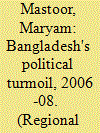

|
|
|
| 2 |
ID:
094387
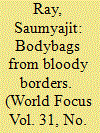

|
|
|
| 3 |
ID:
169659
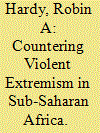

|
|
|
|
|
| Summary/Abstract |
This essay addresses recurring and growing inaccurate reports from political officials as well as counter-terrorism analysts and journalists that the Sahara-Sahel group Boko Haram is a defeated entity. Notwithstanding concerted efforts to rout the movement, Boko Haram and its network of jihadists have expanded. Crucial misunderstandings surrounding what fostered and sustains the phenomenon—as well as a general naivety regarding the organization’s flexibility to adapt to attract combatants, financial support, and weaponry beyond Nigeria’s borders—have made performing basic adequate risk assessments overwhelmingly challenging. Policy makers and CVE (Countering Violent Extremism) practitioners would be wise to recognize that not only has Boko Haram morphed but its growing affiliates also terrorize increased territory. The threat of militant Islam in the Sahara-Sahel, therefore, has not been contained as some would have us believe. Rather, Muslim extremism has become entangled and more complex not only in Africa but across the Muslim world. When jihadists in one territory have taken a beating, surviving fighters have simply relocated to other geographies accompanied by connections for capital and munitions. In this way, Boko Haram—the fulcrum of violent Islam in the Sahara-Sahel—has become, over time, an international jihadist actor.
|
|
|
|
|
|
|
|
|
|
|
|
|
|
|
|
| 4 |
ID:
088768
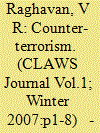

|
|
|
| 5 |
ID:
082504
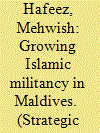

|
|
|
| 6 |
ID:
114732
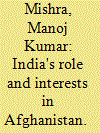

|
|
|
| 7 |
ID:
106640
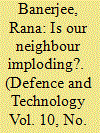

|
|
|
| 8 |
ID:
077161
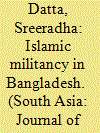

|
|
|
| 9 |
ID:
066959
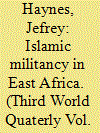

|
|
|
| 10 |
ID:
075437
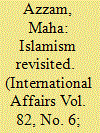

|
|
|
| 11 |
ID:
080940
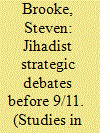

|
|
|
|
|
| Publication |
2008.
|
| Summary/Abstract |
In 2004 Lia and Hegghammer observed a new genre of "jihadi strategic studies," characterized by secular-rational analyses, familiarity with Western sources, and a willingness to self-critique. Through four case studies (the strategies of takfir groups in 1960/1970s Egypt, the far enemy-near enemy debate, the differing revolutionary modes of Al Jihad and Gamaa Islamiyya, and the decision by Al Qaeda to target the West) this article finds that many of the traits observed by Lia and Hegghammer have deep roots among jihadist thinkers. This article will interest those who study terrorism, strategy, and the history of Islamic militancy
|
|
|
|
|
|
|
|
|
|
|
|
|
|
|
|
| 12 |
ID:
104502
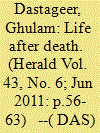

|
|
|
| 13 |
ID:
051985
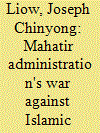

|
|
|
| 14 |
ID:
123367
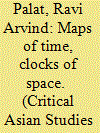

|
|
|
|
|
| Publication |
2013.
|
| Summary/Abstract |
When Asia was conceptualized as Europe's "other," it was also cast as a temporally delimited concept: once capitalist modernity - assumed to operate evenly across the globe by conservatives, liberals, and the left - spread to eastern Eurasia, the differences between two unequal halves of the continent were expected to evaporate. The persistence of differences long after "Asia" was incorporated into the capitalist world-economy has led to a cartographic definition of the continent. Such definitions do not allow for historical processes that reshape relations between peoples, forging new links and severing old ones. This article traces the changing imaginaries of Asia historically. Since there are no indigenous conceptions of the continent, the author argues that the changing imaginaries of Asia are linked to wider geopolitical processes. When eastern Eurasia was subordinated to the drives of the capitalist world-economy, existing linkages were severed and territories were linked to, or through, colonial metropoles. After a brief period of autarkic development after decolonization, states along the Pacific coasts were increasingly integrated through production and procurement networks leading to a new imaginary of Asia. Since the end of the cold war and the emergence of independent states with large hydrocarbon resources in Central Asia, countries that were once excluded from cold war imaginaries of Asia - as well as India - are being integrated through newer imaginaries that reflect the greater prominence of China and India today as well as the rise of Islamic militancy and new ethnic conflicts.
|
|
|
|
|
|
|
|
|
|
|
|
|
|
|
|
| 15 |
ID:
155039
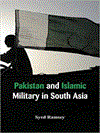

|
|
|
|
|
| Publication |
New Delhi, Alpha Editions, 2017.
|
| Description |
vii, 296p.hbk
|
| Standard Number |
9789386367433
|
|
|
|
|
|
|
|
|
|
|
|
Copies: C:1/I:0,R:0,Q:0
Circulation
| Accession# | Call# | Current Location | Status | Policy | Location |
| 059194 | 363.325/RAM 059194 | Main | On Shelf | General | |
|
|
|
|
| 16 |
ID:
119290
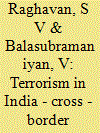

|
|
|
| 17 |
ID:
108448
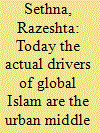

|
|
|
| 18 |
ID:
080532
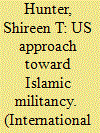

|
|
|
|
|
| Publication |
2007.
|
| Summary/Abstract |
Following the events of 9/11, the US declared a global war on terror and a new strategy based on preemption for defeating Muslim extremism and terrorism. However, the new US strategy so far has not been more successful than earlier strategies in combating either Muslim extremism or international terrorism. Arguably, it may even have contributed to the strengthening of the appeal of Islamic extremism and certain terrorist groups such as al-Qaeda. The principal reason for this lack of success has been the historically inconsistent and contradictory approach of the US to dealing with the problem of Muslim militancy and its manipulation of it for short-term objectives
|
|
|
|
|
|
|
|
|
|
|
|
|
|
|
|
| 19 |
ID:
064567


|
|
|
| 20 |
ID:
148537
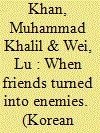

|
|
|
|
|
| Summary/Abstract |
After 9/11, the Pakistani state`s decision to abandon the Taliban (friends) under U.S. pressure and later to become a “frontline” state in the war against terrorism had led to a massive change in the “strategic security paradigm” of the Pakistani security establishment. This strategic policy U-turn transposed the state`s long-held strategic partners and friends (Taliban) into brutal enemies in the war against terrorism in Pakistan. This article critically analyzes the enigmatic situation in which these friendly forces emerged as brutal actors in the war against terrorism and empirically examines the strategies and tactics that Tehrik-i-Taliban Pakistan (TTP), adopted over time to create panic and fear to gain political leverage during military operations against them. This paper also highlights tactical mapping of TTP and its affiliates, its ideological grounding, and critical analysis of the perilous relationship between the state and Taliban forces as the Afghan jihad presents a state of war on terror.
|
|
|
|
|
|
|
|
|
|
|
|
|
|
|
|